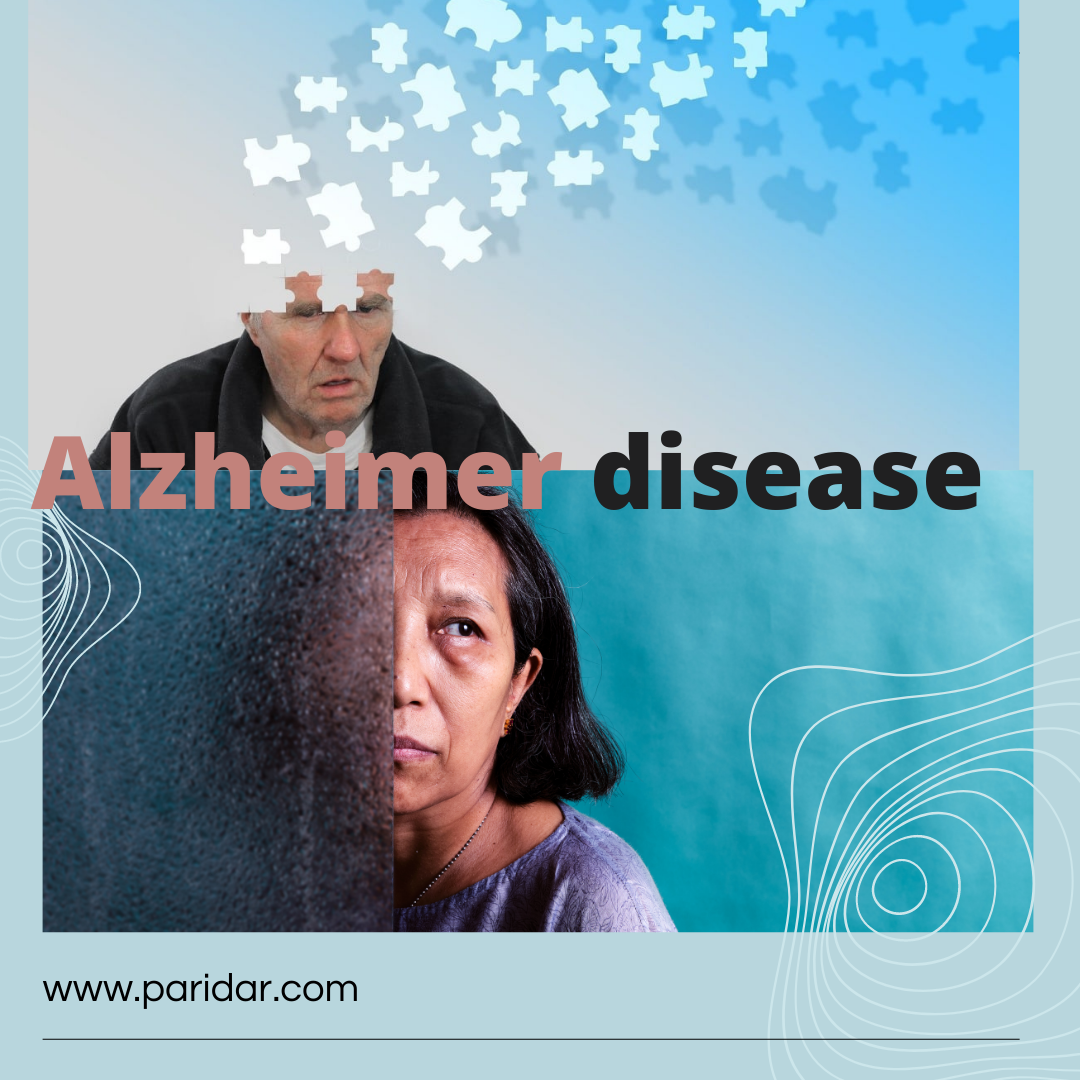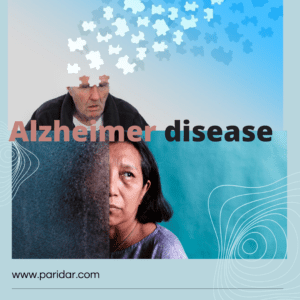Synonym(s): Alzheimer dementia, presenile dementia , dementia presenilis, primary senile dementia
In 1906 the German neurologist Alois Alzheimer reported a case of presenile dementia in a 51-year-old woman whose brain showed distinctive changes at autopsy, but the high prevalence of this disorder went unrecognized until the later decades of the 20th century. Alzheimer disease (AD) currently ranks fourth as a cause of death in the U.S. Its estimated prevalence in this country is 2.5-4 million, with 360,000 new cases yearly, and its annual cost to the national economy is $75-100 billion. The lifetime risk of developing AD is about 9%. Women are 1.5 times as likely as men to be affected. Onset is typically insidious, with a progressive deterioration in the ability to learn and retain information. In recalling and repeating new material, the patient makes intrusion errors (insertion of irrelevant words or ideas) and resorts to confabulation. Orientation and judgment decline; 50% of patients experience depression, 20% delusions. Agitation occurs in 70%. Numerous drugs, including many not considered psychoactive, can aggravate the symptoms of AD. Clinical depression can mask or mimic dementia, and vice versa. Behavioral disturbances are the major indications for the use of psychotropic drugs and physical restraints, and substantially influence the quality of life of demented elderly patients. Neurologic findings may be essentially normal, but myoclonus, bradykinesia, rigidity, and seizures can occur late in the disease. Death is usually due to sepsis associated with urinary or pulmonary infection. Atrophy of the cerebral cortex, with consequent enlargement of sulci and ventricles, may be grossly evident on imaging studies. Histologically the cortex, hippocampus, and amygdala show atrophy of neurons, with cytoplasmic vacuoles and argentophilic granules; neuritic plaques composed of granular or filamentous argentophilic masses with a core of the 42-amino-acid form of β-amyloid (Aβ42) surrounded by astrocytes and microglia; and distortion of intracellular neurofibrils (neurofibrillary tangles) due to excessive phosphorylation of microtubular tau proteins. The concentration of tau protein in the cerebrospinal fluid is increased, whereas that of Aβ42 is decreased. Nearly all people with Down syndrome who live past the age of 40 develop cognitive decline associated with histologic findings typical of AD. Advancing age, depression, low educational level, smoking, and a history of severe head injury are also risk factors. Although most cases are sporadic, about 10% of patients have a family history of AD. Familial disease, which is often characterized by early onset and rapid course, has been traced to mutations of several genes. Most patients with early-onset familial AD show mutations in the presenilin-1 gene on chromosome 14. Mutations in the presenilin-2 gene on chromosome 1 or the amyloid precursor protein gene on chromosome 21 have been found in smaller kindreds with familial disease. Late-onset familial disease has been traced to mutations in an apolipoprotein E (APOE) locus on chromosome 19. The presence of the APOE η4 allele is the most potent genetic risk factor, increasing the lifetime risk of AD to 29%. Presence of this allele is associated with a decline in nicotinic binding sites and heightened vulnerability of the brain to adverse effects of certain drugs (anticholinergic agents, benzodiazepines, certain antidepressants).
All mutations that raise the risk of AD are associated with increased production of Aβ42. It has been suggested that incorporation of presenilin proteins into neurons may program them for death through apoptosis. The diagnosis of AD is established clinically by assessment with an instrument such as the Mini-Mental State Examination and by exclusion of other causes of dementia. Management depends on the degree to which cognition and the performance of daily activities are impaired and on the presence of agitation, depression, and concomitant medical disorders. Nonpharmacologic measures of proven benefit are keeping to a routine schedule of daily activities; allowing the patient to remain in familiar surroundings and to retain personal clothing and possessions; use of signs, labels, clocks, and calendars to enhance temporal and spatial orientation; adequate lighting to diminish nocturnal restlessness and confusion; and maintaining a safe and secure environment to reduce the risk of injury, falls, and flight. Cognitive decline in AD has been attributed in part to a deficiency of the neurotransmitter acetylcholine. Therapy with reversible cholinesterase inhibitors (donezepil, galantamine, rivastigmine) has improved cognition and slowed progression of dementia in some patients, but the effect is gradually lost as endogenous acetylcholine wanes. These agents are generally more effective in controlling behavioral disturbances than in improving mental function. Memantine, an N-methylD-aspartate receptor antagonist, has shown promise in placebo-controlled studies. Numerous other agents (including nicotine, ginkgo extract, selegiline, ergoloid mesylates, and ibuprofen) have shown slight efficacy in some studies. A prospective study has suggested that increasing vitamin E intake may reduce the risk of AD, but only in patients with the APOE η4 allele. Another study has shown reduction in the risk of both Alzheimer and vascular dementia in people who consume 1-6 alcoholic drinks per week.
Farlex Partner Medical Dictionary © Farlex 2012
More Information : www.Paridar.com
More Information:







